Arduino Based Reflow Oven Controller – Testing & Progress
No, this post is not about Megatron looking for energon cubes. We just love labeling all our tools and machines with characters from the show we heart when we were young. Alright, finally there’s some progress on the reflow oven controller. I know many of you guys are asking when they’ll be available, I hope the waiting is going to be over pretty soon! 🙂
While working on the reflow oven controller firmware, we came across some sample codes from Adafruit (Thanks LadyAda!) posted on GitHub (GitHub rocks!). We grab the codes and make some changes on it to suite our hardware setup and the results are pretty amazing. The implementation of the PID control is pretty straight forward and simple to understand. But, it would be advisable to go through this article to get a better understanding especially on the theoretical part.
We are using a 10 A SSR from Crydom which can be controlled from a 3-32 VDC line (just nice for Arduino) to control the oven. The following image shows our setup for the SSR interface with the AC high voltage (be extra careful when dealing with high voltage, please make sure you know what you are dealing with). I would not advise using this setup for safety reason as we tripped the whole power line supply when we accidentally causes some leak from either the live or neutral line to earth!
Upon uploading the example codes onto the Arduino Uno, we hook everything up together with a type K thermocouple stuffed inside the oven. The serial-USB of Uno is connected to the PC with a serial terminal program to log the temperature curve for analysis purposes.
The sample codes allows a start of reflow process to be triggered by a push button and a valid thermocouple wire must be attached in order for the process to be executed. Before starting the reflow process, we push the temperature and timer knob of the oven to maximum.
At each stage of the reflow stage, the stage name, time in seconds and current temperature in the oven will be displayed on the LCD. At the same time, the data will also be sent to the PC over the serial line. The data is useful for reflow curve analysis to perform further tweaking. So, time for some baking now. 🙂
Once the reflow process is completed, the temperature in the oven drops down to room temperature. We slowly open the oven door to help the cooling down process. Data collected from the serial is plotted to check the outcome of the reflow process. This is a 1st run without making any tweaks to most of the parameters used in the code. We are pretty happy with the result and we can’t wait to bake some real PCB. We just ran out solder paste as 2 solder paste jars in our storage are way too hard to be used. It’s time to get some new solder paste together with a mini cooler storage.
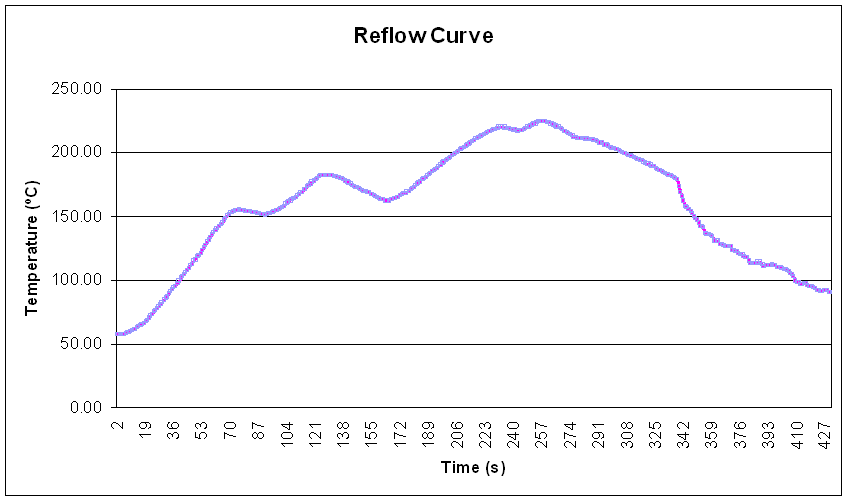 Judging from the reflow curve, we didn’t achieve the peak temperature for lead-free reflow process. The sample code comes with a default 232 °C peak reflow temperature which probably more suitable for leaded reflow process. Some adjustment is required on few parameters and the application level codes. We’ll post it up once it’s completed. We are attaching the schematic for the reflow oven controller for your reference.
Judging from the reflow curve, we didn’t achieve the peak temperature for lead-free reflow process. The sample code comes with a default 232 °C peak reflow temperature which probably more suitable for leaded reflow process. Some adjustment is required on few parameters and the application level codes. We’ll post it up once it’s completed. We are attaching the schematic for the reflow oven controller for your reference.
At time of writing, we have completed making changes to the PCB design for the final revision. This includes some pin swapping for easier firmware implementation and rearrangement of components especially the push button in order for it to be more accessible for users. We hope everything will be ready by early next month and the lead time of components doesn’t change. Take care.

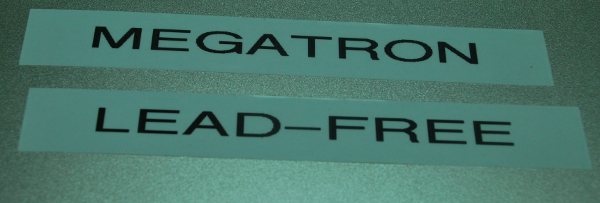
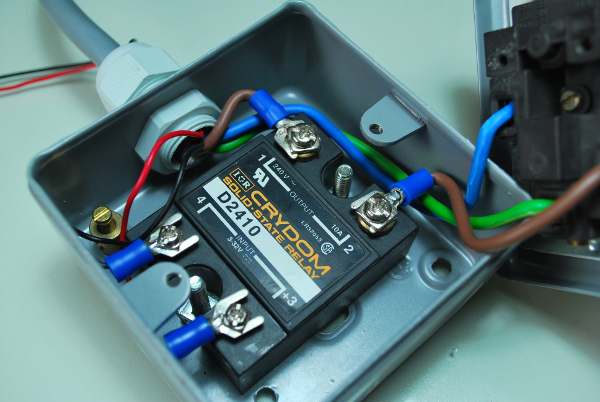

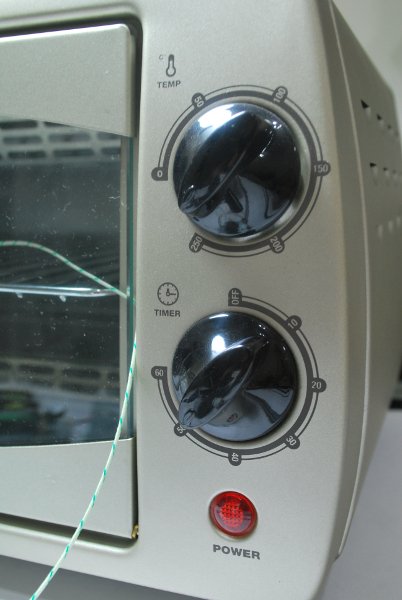
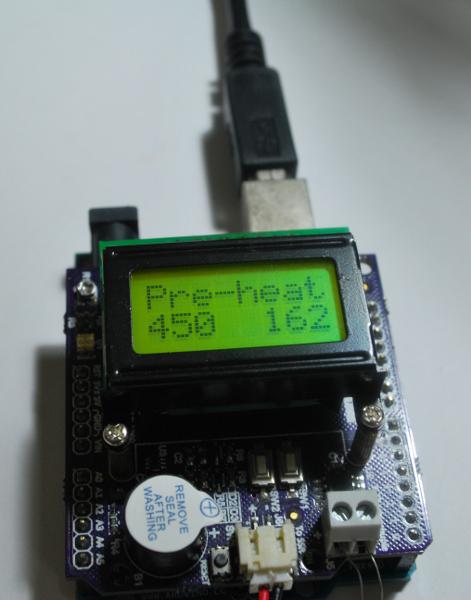
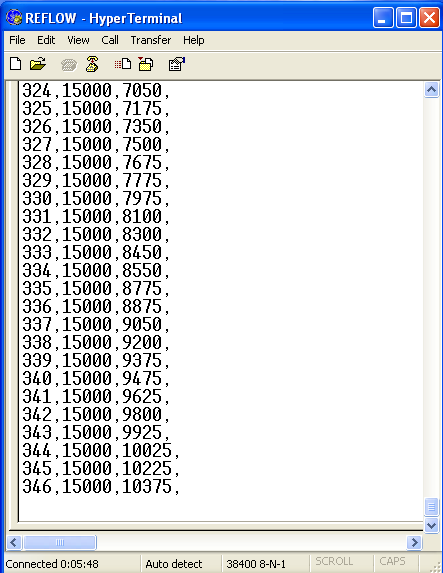
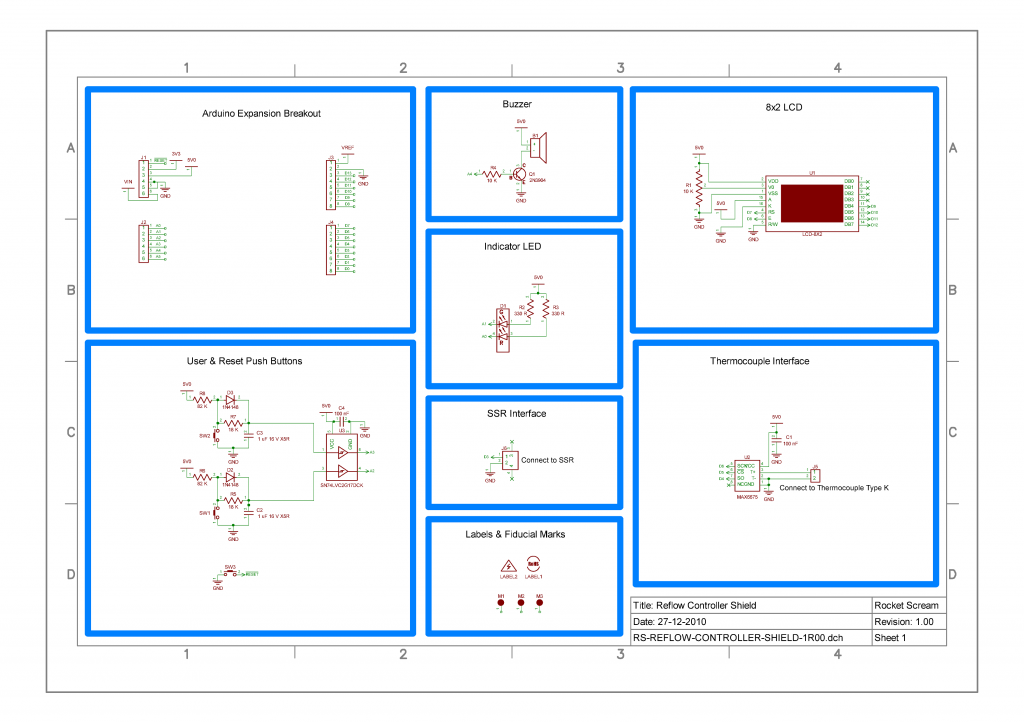
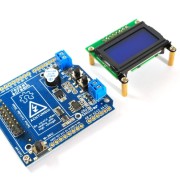
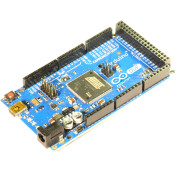
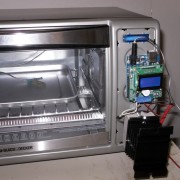
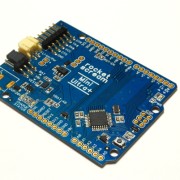
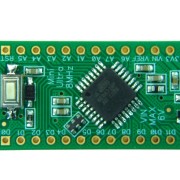
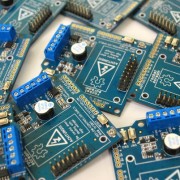
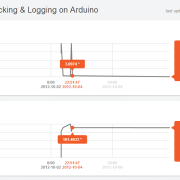
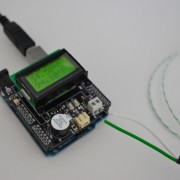







two things you may be interested in (warning, shameless plug):
Arduino PID Library
And exhaustive description of why the library is the way it is.
Hi Brett,
I saw your PID library some time ago. I might have used it earlier if I didn’t bump into LadyAda’s sample code. But, I will check your library deeper after this. Thank you.
Any idea on pricing yet?
Curtis,
It should be somewhere above USD30 and below USD40. We have ordered a 1st batch of the MAX6675 at reasonable price, we hope we can maintain that else the price will go nearer to USD40. The boards are made from TG170 material, else we might be able to push it further lower. 🙂
Awesome!
I am looking at making a PC application for this device so that you can configure, label and upload profiles to the device. If I can get your firmware I will create an serial interface description so that my app can send it the profiles and config data for the PID if you are interested.
Curtis,
That’s what we were thinking! All our hands are tied down at the moment, that’s why we didn’t get the time to do that. We are publishing the code soon after testing on the final units. A very good start point would be Brett’s PC application (it’s awesome complete) running on Processing. Processing would be good choice as it can run on all major platforms. The last time I was doing PC programming was 6 years ago on some crappy old VB. We’ll drop you a mail.
Np. If there is already something made then I am willing to help out with that code rather than starting from scratch.
Cheers.
On another note. Are you planning to make this stackable? Perhaps the screen gets in the way but I would like to have the screen mounted externally and put my SpeakJet shield on top. Will there be options?
I don’t think you’ll able to stack them as there’s too many tall components. Although, SpeakJet shield can go underneath, the pins are basically occupied (left with 1 analog) and SpeakJet uses quite a lot of pins too. You are thinking of a talking oven, aren’t you? Sweet. 🙂
yeah I can put the speakjet underneath, just wondering if it was a plan to have them stacked that’s all. Yep talking oven was the plan but i guess the pins are taken 🙁
Any progress on this… I’m still waiting to buy one :)…
Adam,
The fab just received the TG170 material today. It took them 2 freaking long weeks for them to replenish! We didn’t want to settle for lower specifications FR4 material as we want the best for our fellow customers. Will get the board in a week and we’ll assemble them after that. Everything else is already here except the boards. So sorry everyone for waiting.
Still waitin…
Look forward to getting one of these too!
Any progress on the PC config software?
We will give the basic firmware out 1st for everyone to get started to bake some boards before going into the PC software (it eventually will have one, :)). Kinda reluctant posting the firmware now as the pins assignment and everything is slightly different from the final version. It might lead to confusion later. We are working on a wiki now for necessary detail information (guide, hardware files, firmware examples, working examples, etc).
Awesome. Is the plan to open source the PC app?
Yes, definitely! Everything will be open source. 🙂
Fantastic!
I am waiting for one too 🙂
Is it ready for purchase?
Ryan,
It’s ready for purchase quite a while ago. But, we are doing another bigger batch restock at the moment. Thank you.
any news on when next batch is ready, theres no order button on web shop.
John,
We revised the PCB for some small improvement and cost reduction. It should be back in stock before Christmas. So sorry for the wait.